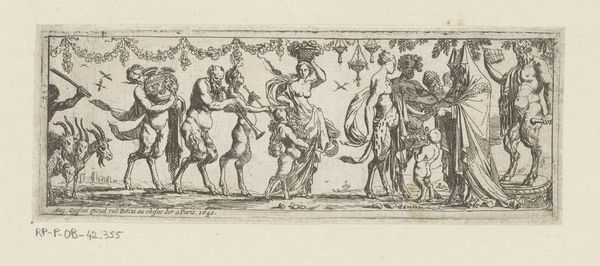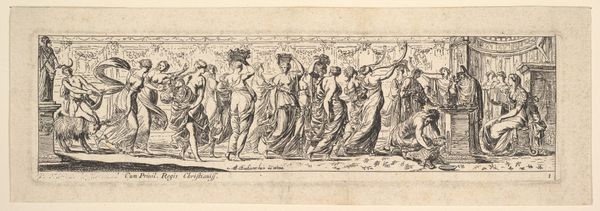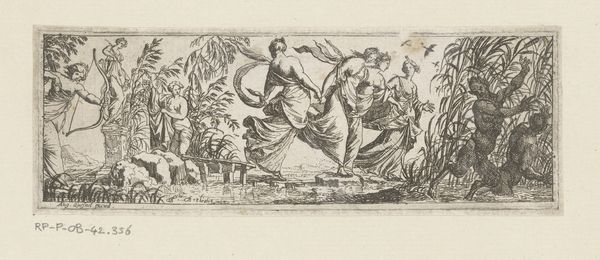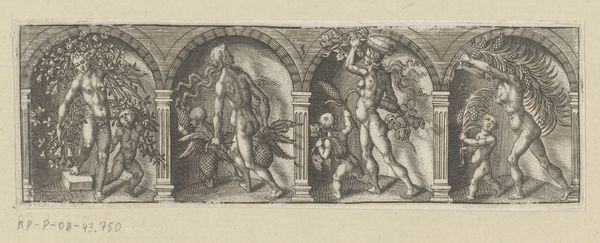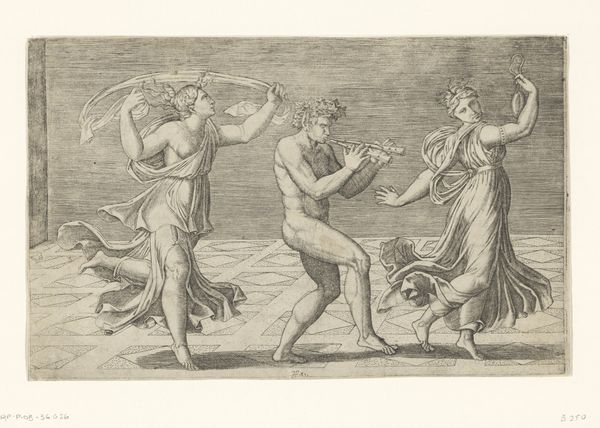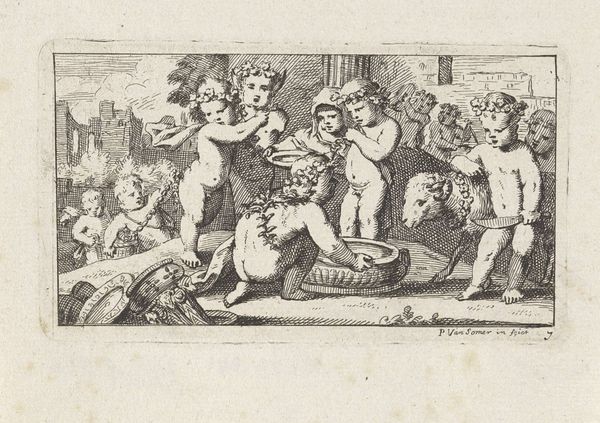
drawing, print, ink, engraving
#
drawing
#
narrative-art
#
baroque
# print
#
pen sketch
#
old engraving style
#
figuration
#
ink
#
pen-ink sketch
#
genre-painting
#
engraving
Dimensions: height 59 mm, width 166 mm
Copyright: Rijks Museum: Open Domain
Curator: What a somber scene. A procession, clearly, but touched by profound sadness. Editor: Indeed. Here we have an engraving titled "Funeral of a Satyr," attributed to Pierre Brebiette, dating from 1608 to 1650. It is currently held in the Rijksmuseum. Curator: The somber tone is created mostly using line and contrast. Observe the artist’s commitment to detailing texture through simple engraved marks, the density in some areas giving way to ethereal light elsewhere. Note also how rhythm plays a crucial role in our interpretation. Editor: You are spot on to single out the technique. Think about the means of producing this print—the engraver, the paper, the very act of reproduction. Prints like this facilitated the wider circulation of imagery and ideas, serving an educational and even propaganda role in society. How does that influence your understanding? Curator: It definitely provides an angle. However, I am inclined to examine its symbolic significance from within. What, in the language of form, is Brebiette trying to communicate about death? The procession is fragmented by the various stages of grief enacted. Each group embodying different responses to mourning the passing of a satyr. Editor: Let’s talk more about materiality. Paper itself, though seemingly humble, has historically been a valuable commodity and carrier of knowledge. The work's small scale invites intimacy, but remember the social conditions of its making and consumption. This was an item for the relatively wealthy. The cultural narrative about mourning only makes sense once we consider production. Curator: Well, let’s agree to differ slightly here. The elegance of line and form invites one to contemplate mortality on its own terms. How different viewers may interpret the death through posture, gesture, composition. Regardless of its origins as a physical artifact embedded in production lines and cultural conditions, I can see the merit in assessing it on aesthetics alone. Editor: And there we have, perhaps, the central challenge. One wonders what labor underpinned even Pierre Brebiette’s career? And indeed, where did he find his creative influences? A mystery of time. Curator: Agreed. One could study the emotional charge further, thinking how to apply theories of perception—but the clock has ticked, hasn’t it?
Comments
No comments
Be the first to comment and join the conversation on the ultimate creative platform.
